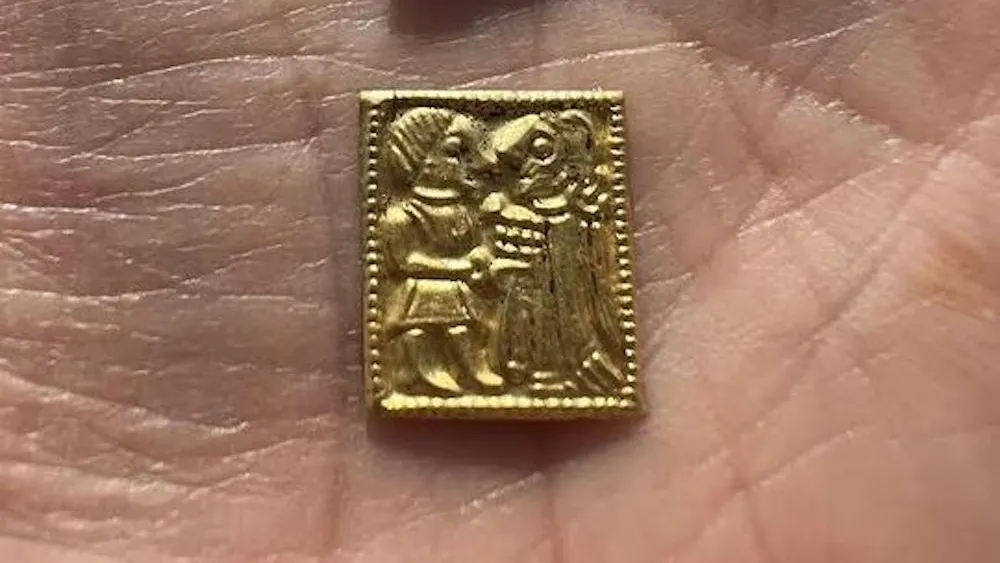
Known as "gullglubber," the gold-foil figure depicts the god Frøy and the goddess Gerd.
(Image credit: The Museum of Cultural History, University of Oslo)
(Image credit: The Museum of Cultural History, University of Oslo)
Archaeologists in Norway unearthed dozens of tiny gold-foil figures at a former pagan temple.
Archaeologists have discovered 35 miniature gold-foil depictions of Norse gods tucked inside the remnants of a pagan temple in Norway.
The gold foils, which are flat and as thin as a piece of paper, contain etched motifs depicting the god Frøy and the goddess Gerd and date to the Merovingian period in Norway, which began in 550 and continued into the Viking Age, according to Science Norway. The foils may have been used as sacrificial offerings.
The gold pieces lack holes, so it's unlikely that they were worn as jewelry. The first gold foils were discovered in Scandinavia in 1725 and were eventually labeled as "gullglubber," which translates to "golden old men."
Read the rest of this article...
No comments:
Post a Comment